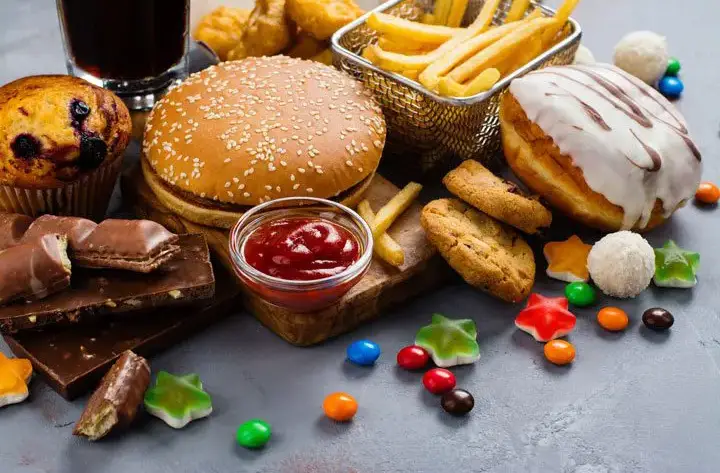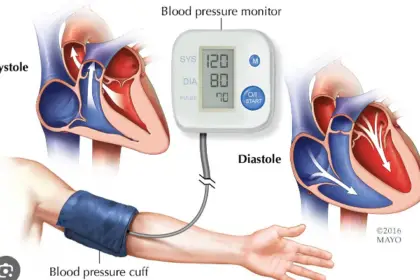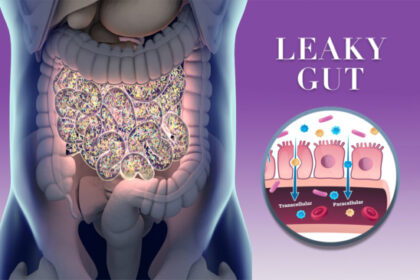From cheddar to parmesan, cheese is one of life’s great culinary pleasures for many people. However, new research suggests our cheese addiction may have a darker side – triggering the same parts of the brain as addictive drugs like cocaine or heroin.
A number of recent studies have found that certain foods, especially those high in fat, salt, and sugar, activate the same neural pathways and pleasure centers in the brain as addictive substances. Cheese, along with chocolate, pizza, French fries, and other comfort foods, lights up areas of the brain associated with reward and craving. This may explain why some people have such a hard time resisting their favorite indulgences.
In this article, we’ll take a closer look at the science linking cheese and other foods to drug-like effects in the brain. We’ll also explore potential health implications of food addiction and highlight steps people can take to enjoy treats like cheese in moderation without overdoing it. While cheese in reasonable portions can be part of a healthy diet, understanding its hold on our brains and behavior may help us develop healthier relationships with the foods we love.
The Science Behind Food Addiction
The addictive pull certain foods have on our brains lies in the complex interplay of chemicals they trigger. When we eat highly palatable foods, dopamine is released in the brain’s reward pathways, generating feelings of pleasure and reinforcement and leaving us wanting more. The fatty acids in cheese stimulate opioid release, similar to drugs like morphine that bind to opioid receptors in the brain. This provides a natural high along with cravings for the next cheese fix.
Other addiction-producing foods identified in studies include pizza, chocolate, ice cream, and other highly processed foods. The combination of fat, carbs, salt, and sugar in these foods stimulates dopamine and opioid signaling, hijacking the brain’s pleasure-seeking mechanisms. This leads to classic addiction symptoms like intense food cravings, loss of control over consumption, and continued overeating despite negative consequences.
According to a poll conducted by the University of Michigan, one in eight Americans over 50 struggle with food addiction. Therefore, it does not come as a surprise that the United States tops our list of 25 Countries With The Highest Rates of Obesity. According to the World Health Organization, obesity remains one of the most significant challenges to public health in the 21st century. A report published by pharmaceutical giant Novo Nordisk ascertains that the global economic impact of the obesity epidemic is likely to double by 2035 to $4.27 trillion from 2020 levels as prevalence of the condition continues to skyrocket to alarming levels.
The science makes clear certain foods mimic addictive drugs in the brain. Understanding this can empower people to make healthier choices and get any potential food addictions under control. Moderation and portion control is key when enjoying tempting foods like cheese that have a powerful hold over our reward circuitry.
20 Most Addictive Foods According to Science
20. Eggs
One of the most versatile foods to make and consume, eggs are a breakfast staple across the world. Due to the extensive variety in which eggs can be prepared and eaten, they make our list of the 20 most addictive foods according to science.
19. Nuts
Nuts contain a lot of vegetable omega 6-fatty acids. That, coupled with the unique combination of flavors and textures that many people find appealing, contribute to the “munching” behavior which is commonly attributed to nuts.
18. Muffins
Muffins are quaint and colorful pieces of cake in a cup-shaped foil and are typically iced. Although they seem harmless, research has shown that the butter in the fluffy sponges and the excessive amount of sugar in the icing ensure a habitual consumption of muffins by the consumer.
17. Steaks
Steaks, which are thick cuts of meat that are usually grilled or fried, are an American culinary favorite. They are usually prepared in domestic and professional kitchens and are often a household offering in a menu. Steaks may appear in small amounts in an hors d’oeuvre, in an entrée dish or, more usually, in a significant amount as the main course.
16. Gummy Candies
Popularly known as “gummies”, gummy candy are a broad category of gelatin based chewable candy. They are available in a diverse variety of shapes, flavors, and sizes and contain exorbitant amounts of sugar which make them incredibly addictive. They are one of the most widely consumed types of confectionary and their popularity among children ranks them on our list of the 20 most addictive foods according to science.
15. Breakfast Cereals
Perhaps one of the most surprising entries on this list, respondents highlighted breakfast cereals to be incredibly addicting. This is probably due to the added usage of sugar and salt which are often used in processed foods to make people crave them more.
14. Popcorn
Whether it be because of the addition of strong aroma chemicals or the added usage of addictive ingredients like salt and butter, developing excessive consumption patterns with respect to popcorn is an incredibly common occurrence. As popcorn becomes synonymous with movies and sleepovers, it is fast emerging as one of the most widely consumed snacks in the United States.
13. Rolls
One of the few non-processed foods on the list, a roll is a round or oblong individual loaf of bread usually served as a meal accompaniment in American English and British traditions. They can be eaten whole, or can be cut and filled. Bread rolls are increasingly common in Eastern, Northern, and Western Europe.
12. Fried Chicken
A tradition dating back to the European Middle Ages, deep fried chicken is a dish consisting of chicken pieces that have been coated with flour and deep-fried.
11. Bacon
According to a study by the National Institute of Health, bacon is one of the most addictive foods primarily due to its distinctive scent, its nostalgic value, and the exorbitant amount of salt and fat it contains.
10. Cheese
Cheese is one of the most popular dairy products in the world, used cross-culturally in an incredibly diverse variety of cuisines. Surveys show that on average, Americans consume more than eleven pounds of cheese per person per year as of 2018. One of the primary reasons for this is the presence of the protein casein which can cross the blood-brain barrier and attach on dopamine receptors in the brain, causing addiction-like symptoms.
9. Cakes
Due to excessive amounts of sugar, desserts like cake cause the brain to release endorphins such as serotonin. These hormones tend to make one feel happy, calm, and cheerful, replicating the same effects certain drugs have on the brain. Hence, cakes make our list of the 20 most addictive foods according to science.
8. Sodas
Like cake, sodas also contain abnormally large quantities of sugar. According to a study by Ohio State University, carbonation also makes sodas incredibly addictive. The bubbles tend to add a minute amount of acidity, which when coupled with excessive caffeine, intensifies feelings of euphoria in the consumer.
7. Cheeseburgers
A study by the University of Wisconsin posited that cheeseburgers can be just as addictive as cigarettes and on occasion, even hard drugs. Due to high quantities of fat and carbohydrates, cheeseburgers can alter brain biochemistry in the same way as certain powerful opiates such as morphine.
6. French fries
French fries are part of a select group of foods that come under the category of “hyperpalatable foods”. Due to an excessive amount of salt, fat, and carbohydrate, French fries stimulate the reward center of the brain to induce constant craving within the consumer. Fast food giants like McDonald’s coat fries in dextrose, a form of sugar to create feelings of euphoria and happiness.
5. Ice cream
Due to the exorbitant usage of addictive ingredients like sugar, fats and other feel-good chemicals, high-calorie foods like ice cream trigger the pleasure centers of the brain to release dopamine and serotonin. Furthermore, there is evidence to suggest that people who excessively consume ice cream are able to build a greater sugar tolerance, enabling them to eat more in order to achieve the same baseline levels of pleasure.
4. Cookies
A global favorite, cookies or biscuits are baked desserts, which are typically small, flat, and sweet. They come in a variety of shapes, flavors and variations and contain enormous amounts of processed sugar, flour, oil, butter, and salt. The high calorie count and fat content commonly associated with cookies are a major contributor to its addictive properties.
3. Chips
Apart from the excessive use of salt, there is another ingredient in chips that rank it so high on our list. The crunchiness of chips is a vital factor to induce addiction to the product. Add to that the heightened flavor and the large amounts of fat and carbohydrate and it becomes apparent how chips have clawed their way to become a global favorite.
2. Chocolate
There are two primary factors that contribute to the addictive nature of chocolates: pharmacological ingredients and additives. Since chocolate contains enormous amounts of sugar, fat and caffeine, even scientists who disregard food addiction as a neuropsychological pathology are forced to accept that chocolate craving is a very real phenomena. The careful combination of sweetness, smoothness and creaminess creates a texture which ensures that the consumer is never able to stop after eating just one chocolate.
1. Pizza
The secret behind its addictiveness lies in the crust, which is made of refined white flour. Refined flour turns into glucose in the bloodstream, triggering the pleasure centers of the brain to release high amounts of serotonin. This is complemented with the topping of cheese, which in it of itself is an incredibly addictive food. Cheese contains the protein casein, which release casomorphins, a kind of opiate.
In Conclusion…
Our brains are hardwired to seek out foods that provide energy and pleasure. Yet in today’s modern food environment, those instincts can backfire, leading us to overconsume processed junk foods and fast foods designed to hijack our reward pathways. While no food is completely off limits, being aware of which ones may have addictive potential is key to building a healthy relationship with food.
Rather than cutting out favorite foods entirely, moderation and balance are vital. When enjoying highly palatable treats, portion control and mindful eating can help prevent compulsive overindulgence. Cooking wholesome meals made from unprocessed ingredients is also a helpful way to get full nutrition and flavor, without addictive additives.
While cheeseburgers and fries provide temporary satisfaction, fueling our bodies with more plants, lean proteins and complex carbs delivers true, lasting energy. Our brains may obsess over gooey cheese and sugary sodas, but we hold the power to feed them a balanced diet instead. By making informed choices, we can still enjoy the flavors we love without getting hooked.





